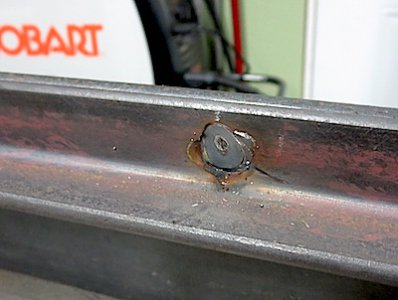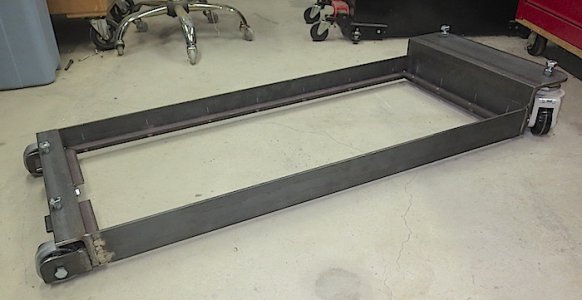E350,
You bought a fabulous wire welder and a very capable stick welder. What you are lacking is both practice and experiance. So, before you spend any more money let me explain some things that you are doing wrong.
First, all welds require a gap, except for fillet and lap welds. The weld is deposited between the metal, not on top of the metal. Welding is not a process of melting and refreezing steel. It is a process of liquifying steel, and allowing two liquid surfaces to recystalize into hopefully a single homogenous structure with similar grain sizes throughout. This depth of penetration (called dillution with the base metal)is very small, less than a 64 of an inch is usually adequate. Think of this not as a smooth plain, this liquid zone, but a zone of liquid metal surrounded by an area of jagged crystals of unmelted steel. The crystals grow along this boundery, interlocking with the unmolten crystals of steel. Like a zipper.
Second, did you purchase the book "New Lessons in Arc Welding?" It is loaded with experiance and explains how to properly gap and bevel weld joints.
It has practice exercises. Until you practice all of the exercises and burn at least a hundred pounds of rod and wire, you will continue to get poor quality welds. This is as good a book as you will ever need for improving your skills. Is a hundred pounds enough? Probably not.
Third, buying more wire and gizmos and expecting them to work any better with out investing any more time in learning them is not going to give you better results.
These are mistakes that you have made.
The 7018's that you purchased are not forgiving and are not for the inexperianced welder and not easy to learn with. The 7018 rods you purchased have an intense focused arc, designed for deep bevel joints, Narrow multipass stringer beads on high strengh difficult to weld steels. They require high currents to maintain high multipass temperatures and to burn out wagon tracks from previous stringer beads so that the weld deposit will pass xray and radiographic tests. It is not designed for cap or weave passes.
I suggested a much more forgiving 7018, It is designed for the type of welding you are doing, ok, ???? I think your welding supplier is unloading excess stock onto an unsuspecting customer, you. You will like the rod I suggested. Go to Home Depot or Lowes and get some Lincoln 6011's They are an extremely easy to use rod for general work and for learning. OK,,,,,,,,,,
You bought an expensive multiprocess wire welder. If I were you, I would learn how to spray and pulse weld with it. You should buy 90% argon and 10% CO2. This gas will allow you to short circuit steel up to 1/8 inch all positions. Spray steel up to 1/2 inch flat and some horizontal, and pulse unlimited positions unlimited thickness with one wire. E70 s3 wire. There are restrictions, learn your limitations, you have the other Lincoln book I suggested. It tells you about limitations and restrictions on highstrength steels.
Remember the Gap!
Chuck





